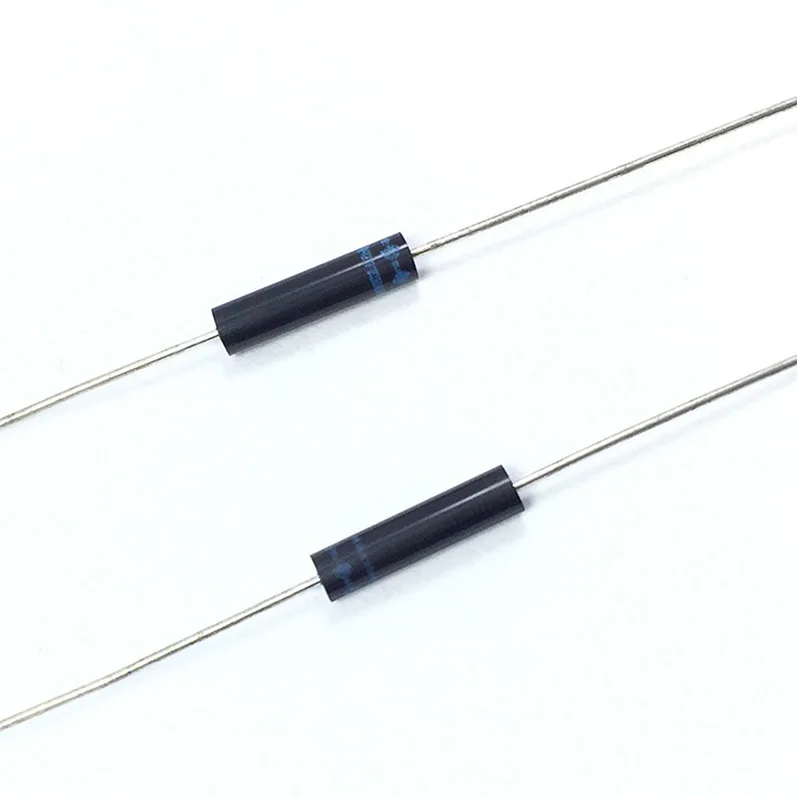The temperature tenderness of a Zener diode (temperature coefficient) is provided as a percentage change in reference voltage per centigrade degree modify in diode temperature. This quantity is usually in the number of +/- 0.1 per cent per deg C. The path of the change is related to the process of dysfunction (avalanche multiplication versus Zener breakdown). Typically, if the reference voltage is over 6V the coefficient is positive, if under, negative.

Some manufacturers have made temperature compensated guide diodes by mixing an optimistic temperature coefficient dysfunction diode with a forward partial, bad temperature coefficient, plastic diode in one single deal (i.e. the generic 1N829, a 6.2V research diode with a temperature coefficient of +/- 0.0005 % per deg D over a selection of -55 to +100 deg C). Rather than work with a single greater diode it is often better to place numerous dysfunction diodes in series when designing a top voltage reference. That combination enables larger voltage, higher energy dissipation, lower heat coefficient, and decrease active weight (the reciprocal mountain of the volt-amp curve in the functioning region). Obviously, this can be a more costly alternative than the usual single 2cl77 diode.
Diodes come in many patterns and sizes. High-current diodes in many cases are attached to a heat-sink system to cut back their functioning temperature. It is probable to place diodes in similar to improve the current-carrying capacity, however the VI faculties of equally diodes should be carefully matched to make sure that current divides consistently (although a small resistor may be put into line with each diode to greatly help equalize the currents). All diodes have some loss recent (current that gets through each time a diode is reverse-biased).
This leakage current-better known as the reverse current (IR)-is very small, generally within the nano ampere range. Diodes also provide a optimum allowable reverse voltage, peak opposite voltage (PRV), or top inverse voltage (PIV), over which a sizable current will flow in the incorrect direction. If the PIV is exceeded, the diode may get zapped and can become forever damaged. The PIV for diodes differs from a few volts to as much as thousands of volts. One process for achieving an efficiently larger PIV is to put diodes in series. Again, it is very important that diodes are coordinated to make sure that the reverse voltage divides similarly (although a small resistor placed in similar with each diode can be utilized to equalize the reverse voltages).
Different what to consider about diodes contain optimum forward recent (IF), capacitance (formed over the pn junction), and opposite healing time. Most diodes have a 1-prefix status (e.g., 1N4003). The two stops of a diode are usually famous from each other with a mark. For glass-encapsulated diodes, the cathode is selected with a black band, while black-plastic encapsulated diodes work with a white band. If no representations can be found (as observed with many energy diodes), the cathode may be a bolt like piece. This item is introduced by way of a heat-sink unit (piece of metal with a hole) and is fixed down by way of a nut. A fibre or mica washer can be used to identify the cathode electrically from the metal temperature sink, and a special silicone oil is put involving the machine and temperature sink to improve thermal conductivity.
A zener diode is just a system that acts as a normal pn-junction diode as it pertains to forward biasing, but it also has the capacity to conduct in the reverse-biased direction whenever a specific description voltage (VB) is reached. Zener diodes normally have description currents in the product range of a couple of volts to some hundred volts (although greater effective breakdown currents could be achieved by putting zener diodes in series).
